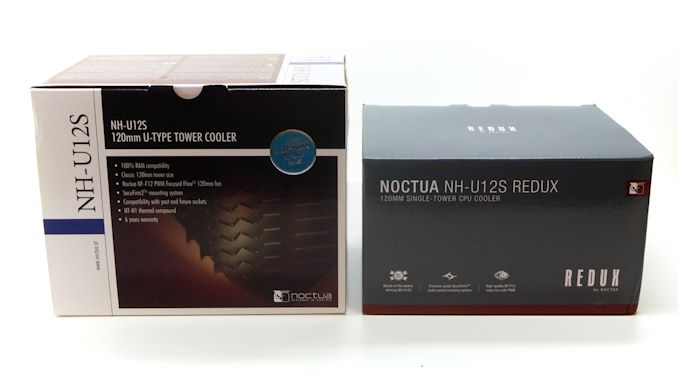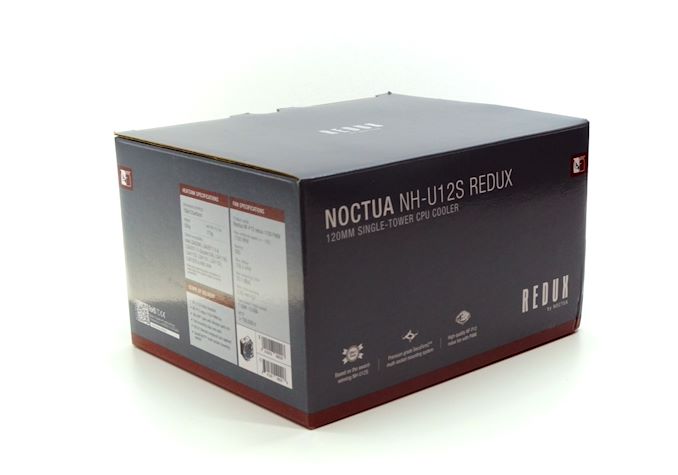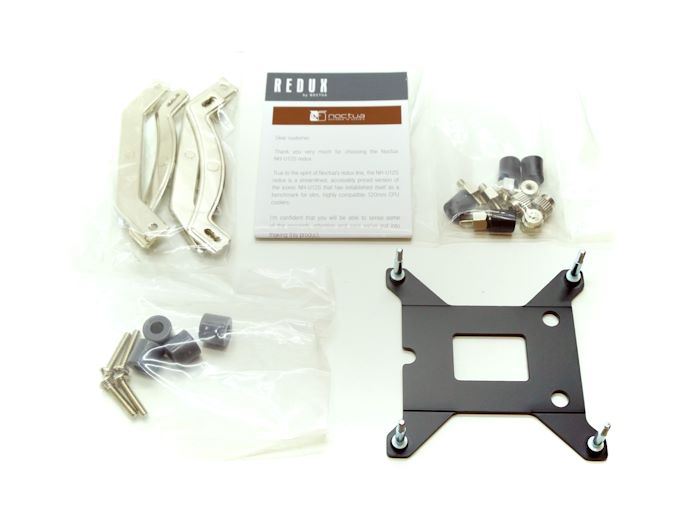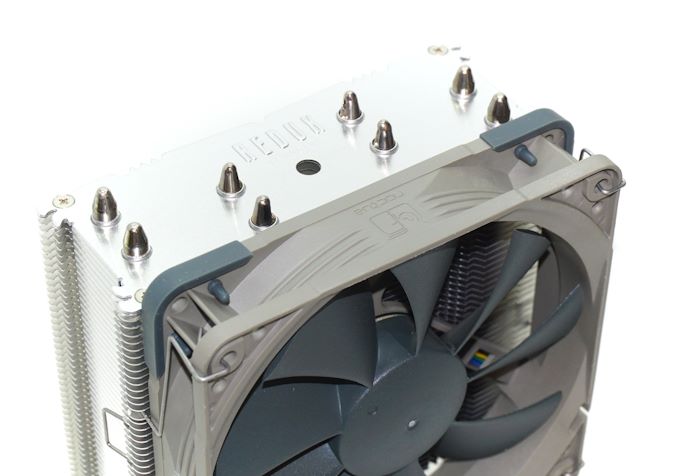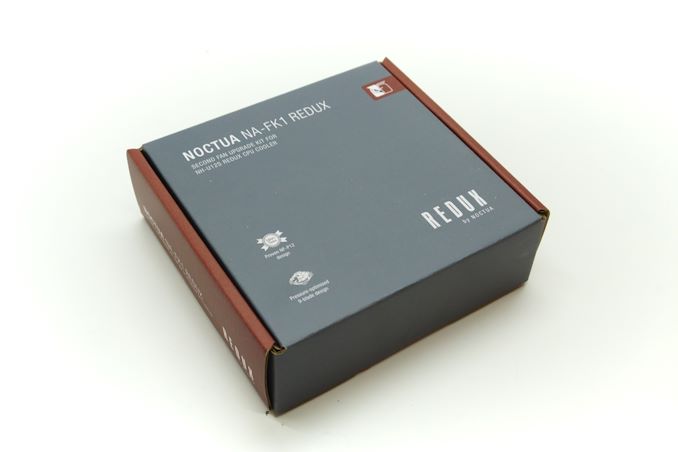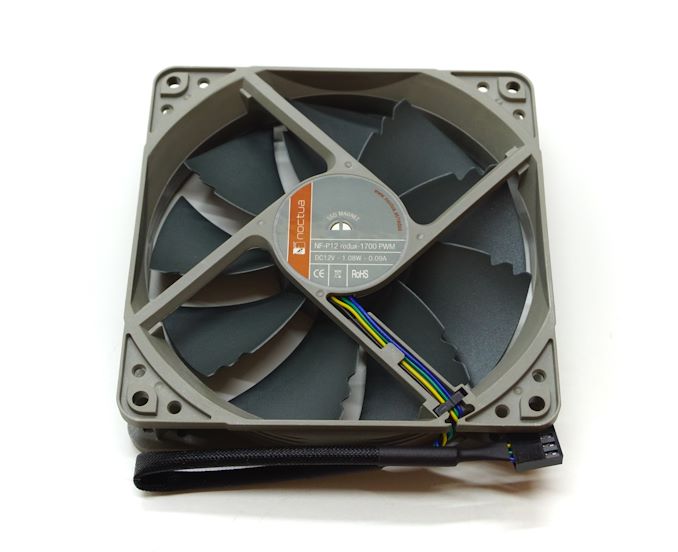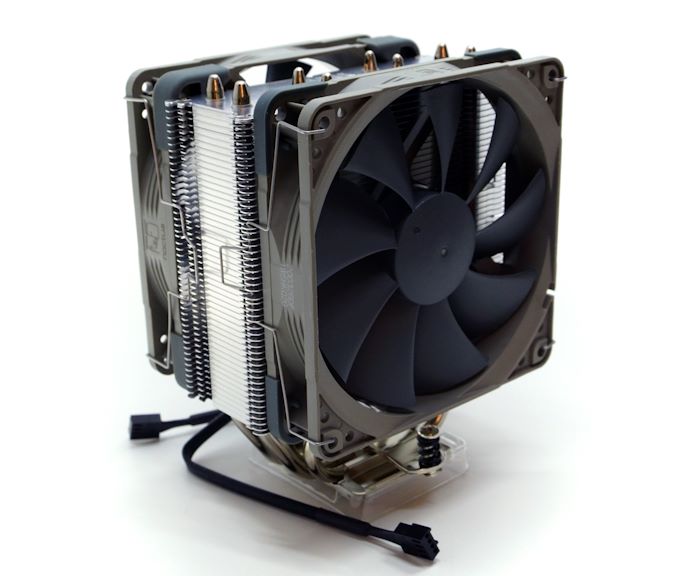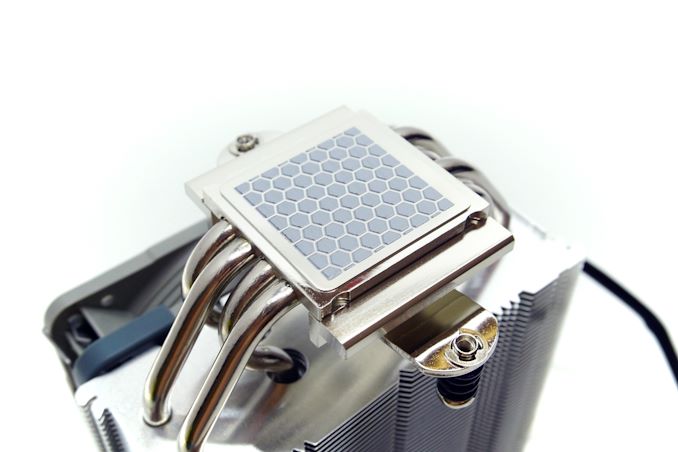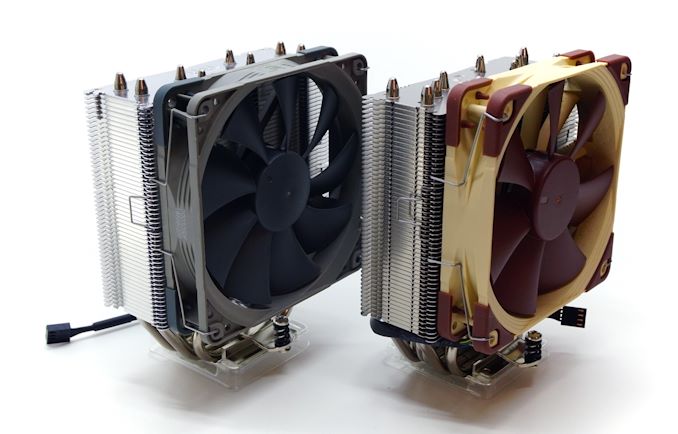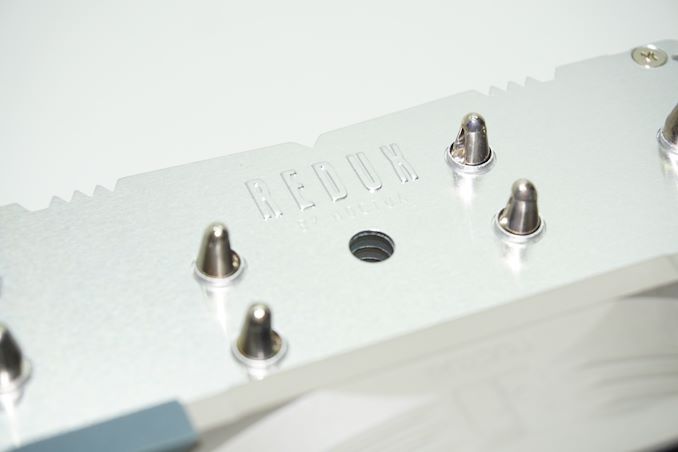
Original Link: https://www.anandtech.com/show/16898/the-noctua-nhu12s-redux-cooler-review
The Noctua NH-U12S Redux Cooler Review: Bringing Noctua's Best To a Lower Price
by E. Fylladitakis on August 25, 2021 8:00 AM EST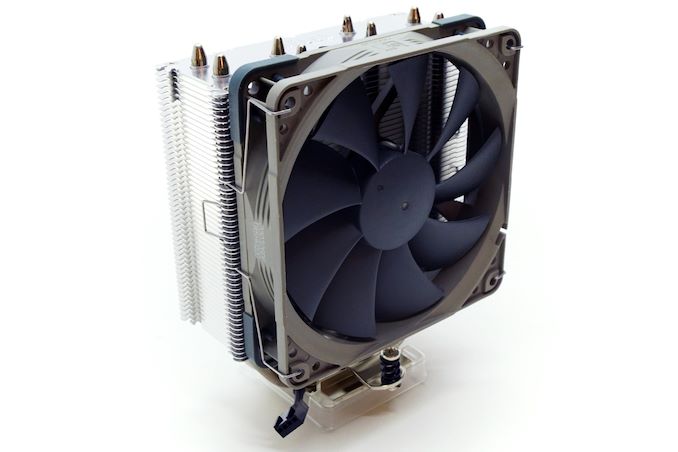
While basic coolers have long been a common pack-in item with most retail CPUs, there's no getting past the fact that many of these coolers are just that: basic. These coolers are sufficient for running a CPU at stock frequencies out of the box, but few stock coolers are built large enough to above and beyond the basics, to deliver impressive thermal and/or acoustic performance. As a result, it's still pretty typical for power users and enthusiasts to go hunting for a more advanced solution – and there's a sizable market of coolers waiting to be found. From compact fansinks to all-in-one liquid coolers that can fill a case, there's a cooler out there for virtually every budget, configuration, and cooling need.
And if by some chance there isn't, then it's only a matter of time until someone builds it. Which is very much the case for the CPU cooler in today's review, Noctua's budget-friendly NH-U12S Redux. Already renowned for their high-quality, high-end cooling products, Noctua is working to broaden their market by making their products a bit more accessible to budget buyers, and they're doing so through products like the Redux.
At a high level, the NH-U12S Redux is a cost-reduced version of the company's very popular NH-U12S cooler. With fewer heatpipes and a different fan, the NH-U12S Redux is intended to bring the quality and cooling performance of its predecessor down to a cheaper, more wallet-friendly price of $50. Which also means that Noctua is more directly facing-off with the other major cooler manufacturers in the highly competitive mainstream market segment.
Packaging & Bundle
The first thing that we noticed about the NH-U12S Redux is the simple, streamlined packaging, which is unlike any packaging of the company that we have previously seen. The artwork on the packaging is pretty much gone, with only basic information regarding the cooler printed on the sides and rear of the box.
Except for the cooler itself, inside the box we found a basic bundle consisting mainly of the mounting hardware required to install the cooler onto a CPU. There also is an illustrated leaflet with mounting instructions. The NH-U12S Redux, much like its siblings, cannot be mounted on Ryzen Threadripper processors. We did not find a syringe with thermal paste inside the packaging – Noctua is instead using pre-applied paste – which is one of the changes Noctua made in order to reduce the retail price of the cooler.
The Noctua NH-U12S Redux CPU Cooler
The Noctua NH-U12S Redux is very similar to the normal NH-U12S, with the exception of a heatpipe and the different cooling fan. Overall, the NH-U12S Redux has one heatpipe less than the NH-U12S and three heatpipes less than the NH-U12A. But perhaps more importantly, the fins on the Redux are also not welded onto the heatpipes. Due to its size and shape, the NH-U12S Redux is compatible with most commercial CPU sockets and it will not block the installation of (regularly sized) RAM modules.
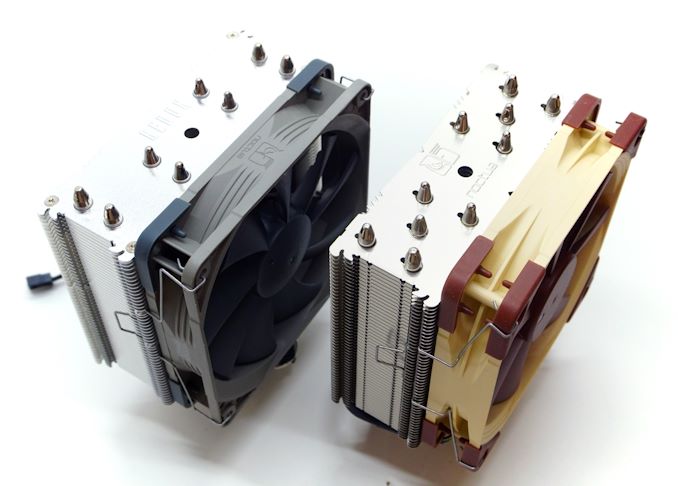
Splitting Image: NH-12S Redux vs. NH-12S
Once the cooler is out of the box, most experienced users will focus their attention on the new cooling fan. And not because of any feature that really stands out, but because this is one of the very rare occasions where Noctua has ditched their iconic brown/beige color theme. Other than that, the NH-U12S Redux has a relatively simple design, being a tower cooler with a small base and heatpipes transferring the thermal energy away from the CPU and to the fins. Although this is the least expensive cooler of the U12 series, the NH-U12S Redux is certainly not a compact cooler; though at 160mm tall, it should fit inside most ATX cases without any compatibility issues. The width of the cooler though may limit the installation of RAM modules higher than 42 mm into some of the RAM slots.
The body of the NH-U12S Redux is beautifully designed and made, with the perfectly arranged fins and heatpipes creating a work of art. There are four heatpipes extending to both sides of the array, which are definitely made out of copper but are further nickel-plated, both to protect them from corrosion and for aesthetic reasons.
The fin array is not too dense, allowing the NH-U12S Redux to perform well with a single 120 mm cooling fan. However, for those seeking an extra performance boost, the company offers a kit containing a second 120 mm fan. We should also add that these fans are not the same as the ones used on the NH-U12S and NH-U12A. The NF-P12 fans used by the NH-U12S Redux are faster and noisier.
The base of the cooler that makes contact with the processor is split into two parts. The bottom half of the base is made out of nickel-plated copper, maximizing the heat transfer rate from the CPU to the heatpipes. It is extremely well machined, perfectly flat and smooth. The top half serves only as a mechanical support and is made out of aluminum, while the mounting bracket is nickel-plated steel. We see that there is thermal paste pre-applied here, a rare thing to see on Noctua’s products.
Testing Methodology
Although the testing of a cooler appears to be a simple task, that could not be much further from the truth. Proper thermal testing cannot be performed with a cooler mounted on a single chip, for multiple reasons. Some of these reasons include the instability of the thermal load and the inability to fully control and or monitor it, as well as the inaccuracy of the chip-integrated sensors. It is also impossible to compare results taken on different chips, let alone entirely different systems, which is a great problem when testing computer coolers, as the hardware changes every several months. Finally, testing a cooler on a typical system prevents the tester from assessing the most vital characteristic of a cooler, its absolute thermal resistance.
The absolute thermal resistance defines the absolute performance of a heatsink by indicating the temperature rise per unit of power, in our case in degrees Celsius per Watt (°C/W). In layman's terms, if the thermal resistance of a heatsink is known, the user can assess the highest possible temperature rise of a chip over ambient by simply multiplying the maximum thermal design power (TDP) rating of the chip with it. Extracting the absolute thermal resistance of a cooler however is no simple task, as the load has to be perfectly even, steady and variable, as the thermal resistance also varies depending on the magnitude of the thermal load. Therefore, even if it would be possible to assess the thermal resistance of a cooler while it is mounted on a working chip, it would not suffice, as a large change of the thermal load can yield much different results.
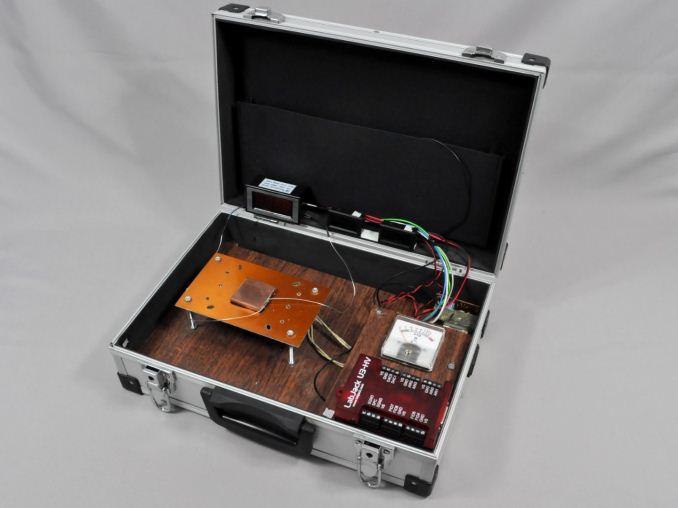
Appropriate thermal testing requires the creation of a proper testing station and the use of laboratory-grade equipment. Therefore, we created a thermal testing platform with a fully controllable thermal energy source that may be used to test any kind of cooler, regardless of its design and or compatibility. The thermal cartridge inside the core of our testing station can have its power adjusted between 60 W and 340 W, in 2 W increments (and it never throttles). Furthermore, monitoring and logging of the testing process via software minimizes the possibility of human errors during testing. A multifunction data acquisition module (DAQ) is responsible for the automatic or the manual control of the testing equipment, the acquisition of the ambient and the in-core temperatures via PT100 sensors, the logging of the test results and the mathematical extraction of performance figures.
Finally, as noise measurements are a bit tricky, their measurement is being performed manually. Fans can have significant variations in speed from their rated values, thus their actual speed during the thermal testing is being recorded via a laser tachometer. The fans (and pumps, when applicable) are being powered via an adjustable, fanless desktop DC power supply and noise measurements are being taken 1 meter away from the cooler, in a straight line ahead from its fan engine. At this point we should also note that the Decibel scale is logarithmic, which means that roughly every 3 dB(A) the sound pressure doubles. Therefore, the difference of sound pressure between 30 dB(A) and 60 dB(A) is not "twice as much" but nearly a thousand times greater. The table below should help you cross-reference our test results with real-life situations.
The noise floor of our recording equipment is 30.2-30.4 dB(A), which represents a medium-sized room without any active noise sources. All of our acoustic testing takes place during night hours, minimizing the possibility of external disruptions.
| <35dB(A) | Virtually inaudible |
| 35-38dB(A) | Very quiet (whisper-slight humming) |
| 38-40dB(A) | Quiet (relatively comfortable - humming) |
| 40-44dB(A) | Normal (humming noise, above comfortable for a large % of users) |
| 44-47dB(A)* | Loud* (strong aerodynamic noise) |
| 47-50dB(A) | Very loud (strong whining noise) |
| 50-54dB(A) | Extremely loud (painfully distracting for the vast majority of users) |
| >54dB(A) | Intolerable for home/office use, special applications only. |
*noise levels above this are not suggested for daily use
Testing Results, Maximum Fan Speed (12 Volts)
Starting things off, let's take a look at the NH-U12S Redux performance with the fans at their full speed (12 V).

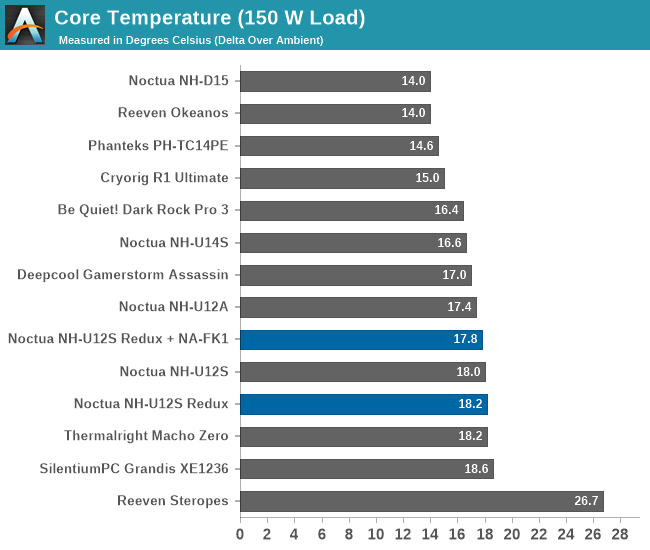
| Core Temperature, Constant Thermal Load (Max Fan Speed) |
Noctua claims that the NH-U12S Redux can perform just as well as the more advanced (and expensive) NH-U12S, just at the expense of higher noise. Our thermal testing reveals that this claim is true, as the NH-U12S Redux does perform almost identically compared to the NH-U12S. The thermal performance of the NH-U12S Redux is just a little worse than the NH-U12S without the addition of the extra NA-FK1 fan. Adding the NA-FK1 fan makes the NH-U12S Redux a little bit better than the NH-U12S but the actual performance difference is very small.
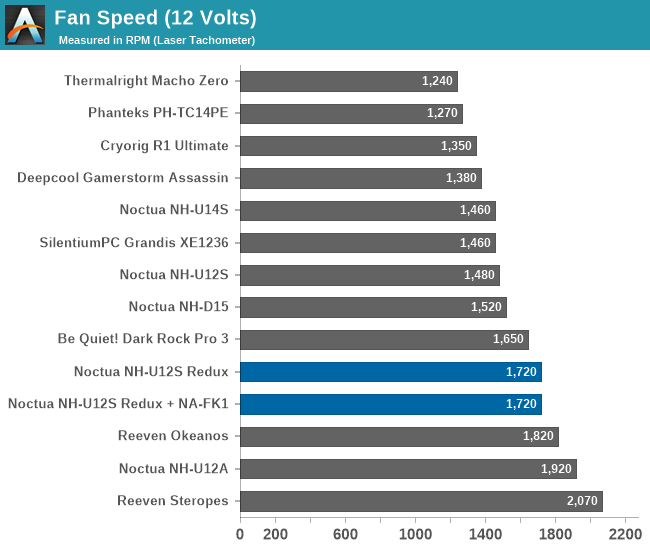
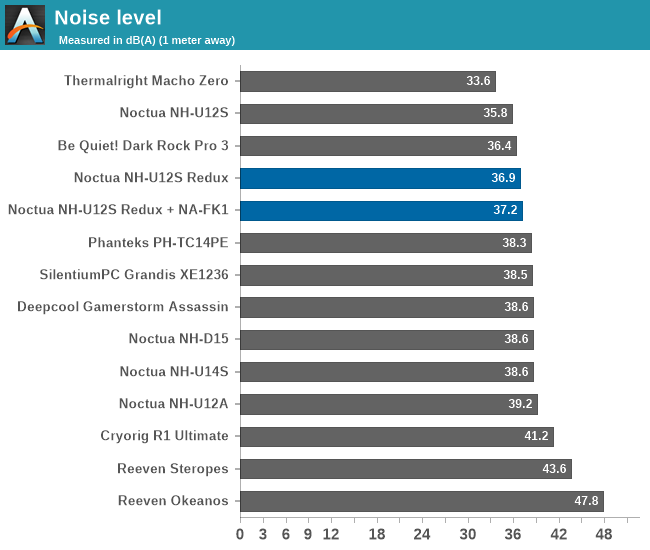
When it comes to acoustics, Noctua’s statement regarding the amount of noise generated by the NH-U12S Redux is also true. The NH-U12S Redux is noticeably louder than the NH-U12S – though not by much. With its fan running at maximum speed, the noise output of the cooler is not too high at all. Meanwhile, adding the second fan increases the noise output of the NH-U12S Redux a bit more.
Testing Results, Low Fan Speed (7 Volts)
Switching things up a bit, let's next take a look at cooler performance with the NH-U12S Redux fans taken down to 7 Volts.

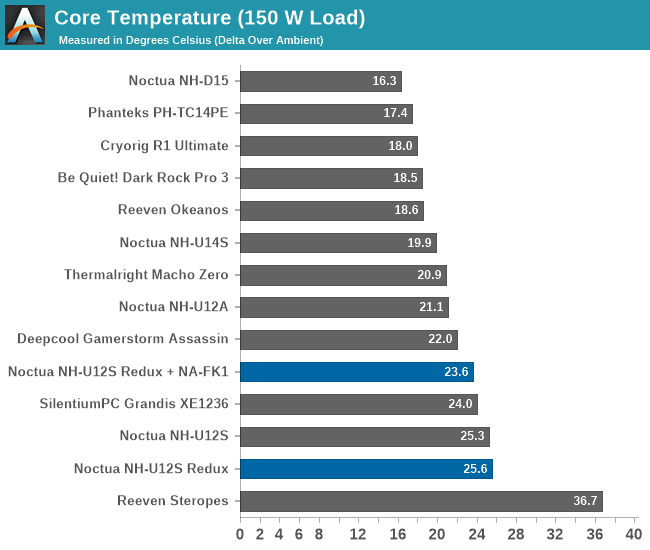
| Core Temperature, Constant Thermal Load (Low Fan Speed) |
With the speed of its fans reduced down to about 620 RPM, the NH-U12S Redux still performs almost just as well as the NH-U12S. The addition of the NA-FK1 fan here does make a difference, improving the thermal performance of the NH-U12S Redux significantly and pushing it close to the significantly larger NH-U12A.

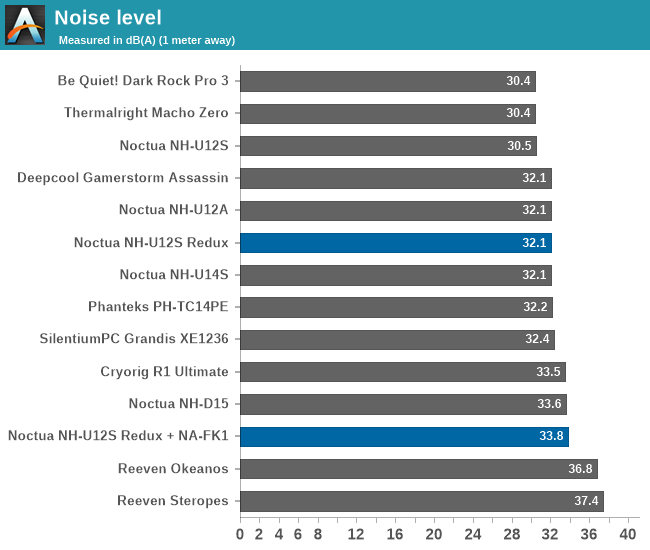
Both the NH-U12S Redux and the vanilla NH-U12S are practically dead silent under these operating conditions. The NH-U12S Redux has a noise output 1.6 dB(A) higher than that of the NH-U12S, which is technically a significant difference due to the logarithmic scale, yet on an absolute basis, 32.1 dB(A) is very low and you'd really need to focus to notice that kind of noise in a quiet room. The addition of the second fan makes the NH-U12S Redux more noticeable, but 33.8 dB(A) are very comfortable for everyday use.
Thermal Resistance VS Sound Pressure Level
During our thermal resistance vs. sound pressure level test, we maintain a steady 100W thermal load and assess the overall performance of the coolers by taking multiple temperature and sound pressure level readings within the operating range of the stock cooling fans. The result is a graph that depicts the absolute thermal resistance of the cooler in comparison to the noise generated. For both the sound pressure level and absolute thermal resistance readings, lower figures are better.
In the above chart, we can discern that the NH-U12S is indeed better than the NH-U12S Redux when both the thermal performance and acoustics are taken into account. The NH-U12S Redux does offer great overall performance though, rivaling even that of the NH-U12A under certain conditions where the fan of the latter becomes too noisy for the thermal performance the cooler offers. We can also see that the addition of the second fan makes the NH-U12S Redux capable of reaching slightly lower thermal resistance figures, though always at the disproportionate expense of noise.
Conclusion
The NH-U12S Redux is a fresh approach to the market from Noctua, as it is one of their first attempts to significantly reduce the cost of their products and make the company more approachable to budget-driven users. Noctua’s reputation may be legendary, but there's no getting around the fact that the mainstream market for coolers is quite price-sensitive, making the development of the NH-U12S Redux a strategic diversification attempt that should open Noctua up to a larger percentage of PC builders.
In order to make the NH-U12S Redux ($50) more affordable, Noctua removed some of the items they usually bundle with their coolers, such as the thermal paste syringe and the low noise fan adapter, and removed one heatpipe from the body of the cooler. The quality of the body was also reduced, as the aluminum fins are no longer welded onto the heatpipes. Such differences may be subtle, even unimportant for typical PC users, yet they will not stay unnoticeable to experienced builders and experts.
However, in terms of performance, the NH-U12S Redux has little to fear from the more expensive cooler it was based upon. As promised by Noctua, when compared toe to toe with the NH-U12S, the NH-U12S Redux offers about the same thermal performance. The only difference is that, all else held equal, the Redux is technically noisier for the same level of cooling performance. And we say "technically" because while there is a difference, you're going to be hard-pressed to notice them, especially as the absolute noise levels are still well below what anyone would consider a noisy cooler. If anything, the NH-U12S Redux is one of the quietest tower coolers with a 120 mm fan that we have ever tested, and it's less noisy than Noctua’s own NH-U12A, a cooler that costs nearly twice as much.
In fact the stock performance of the cooler is so good that there's little benefit to be had from trying to improve it with a second NA-FK1 fan. Using a second fan tends to be counterproductive, as it does not significantly improve the performance of the NH-U12S Redux. Instead, it mostly serves to push the total price of the setup to nearly that of the NH-U12S, making the purchase of the NA-FK1 a practically pointless choice.
We believe that the great overall performance and good build quality make the NH-U12S Redux a very competitive product. It is a product that makes a lot of sense in today’s market – far more than the monstrous, ludicrously expensive behemoths, at any rate. For many users, who just want a plug-and-play solution for a PC that they are not planning to fiddle with for years, the NH-U12S Redux is an excellent, cost-effective choice.

